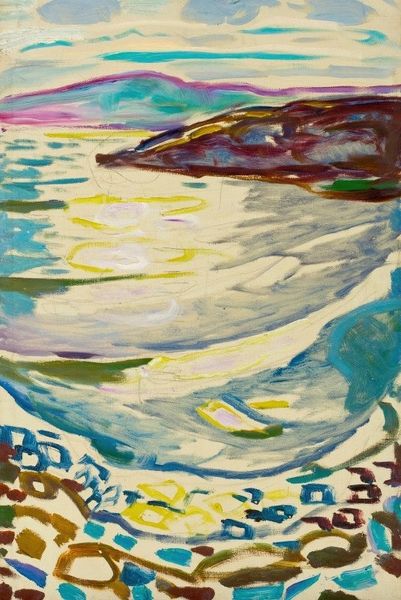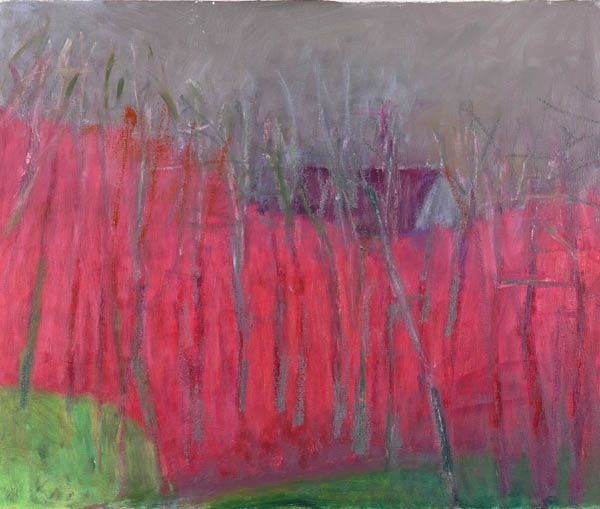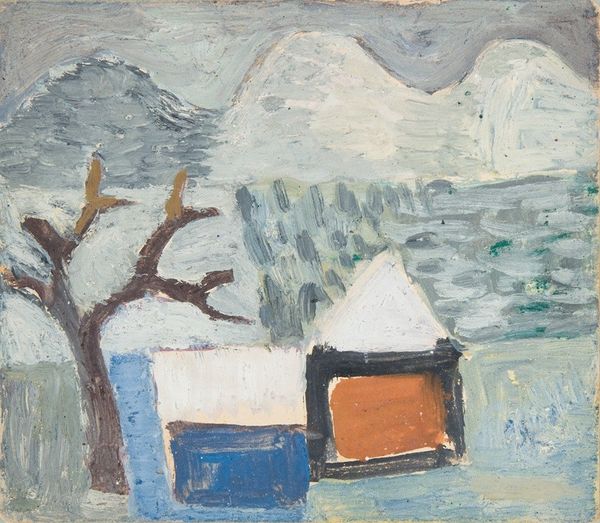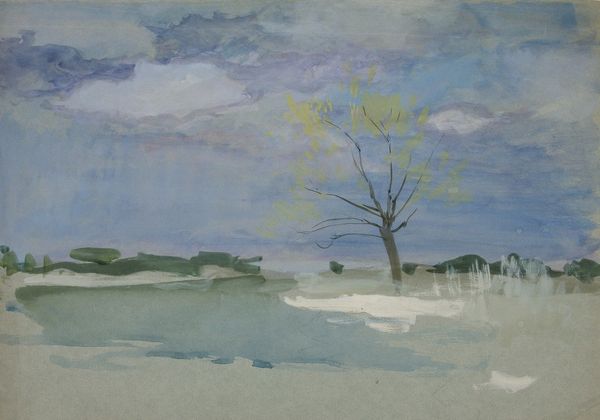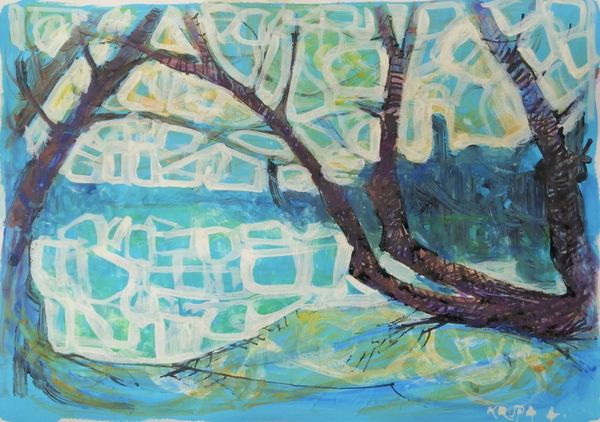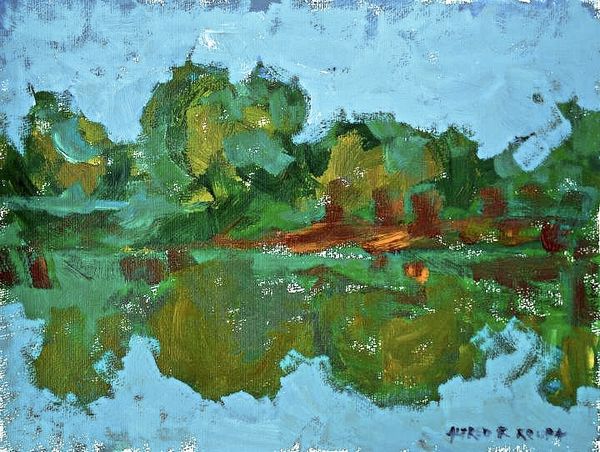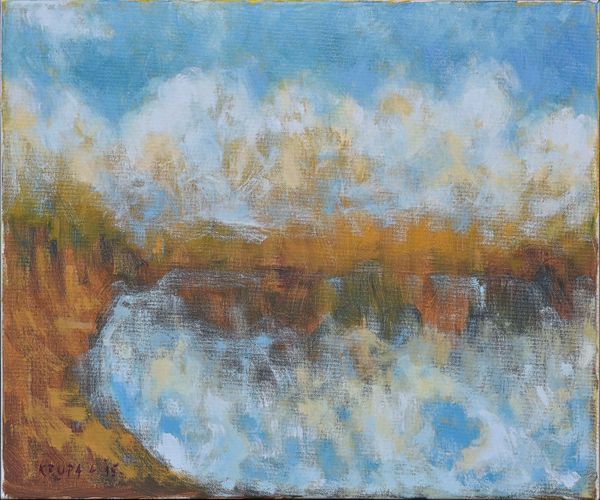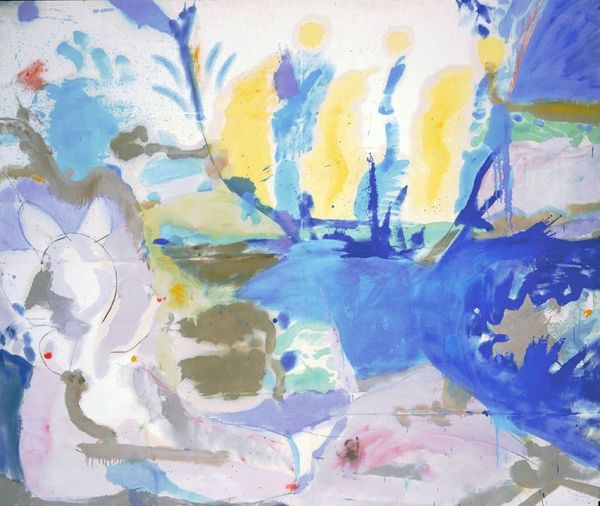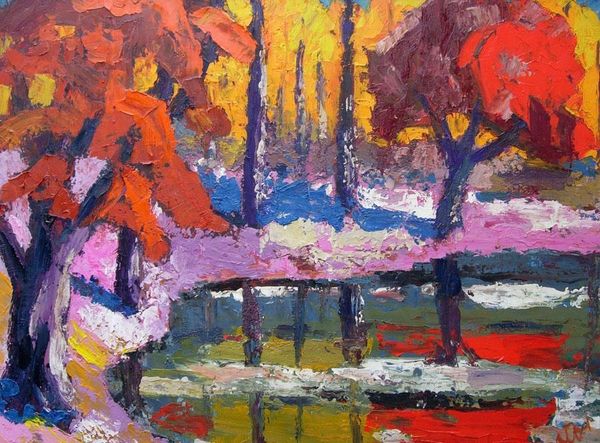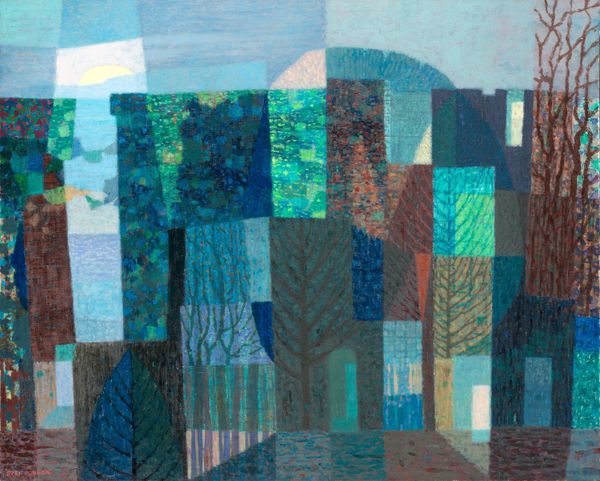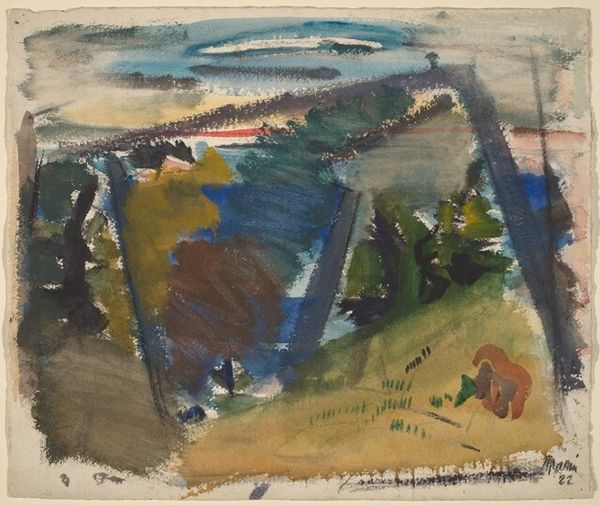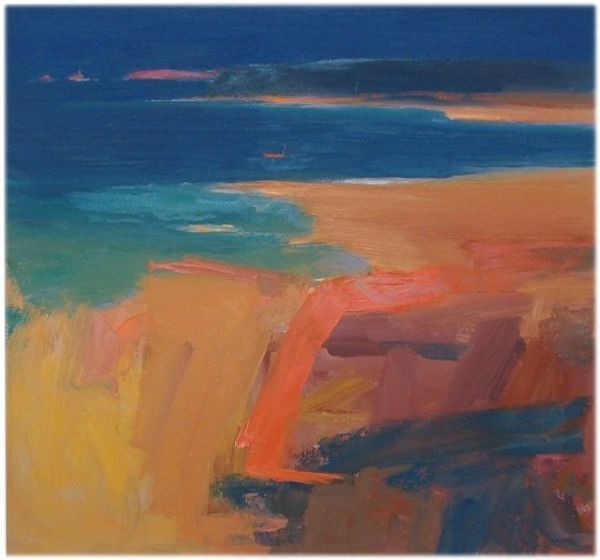
Copyright: Public domain US
Editor: Here we have John Marin’s "Weehawken Sequence" from 1916, an oil painting. It's a whirlwind of blues and grays, punctuated by these almost frantic-looking brown strokes. What strikes me is its frenetic energy - what do you see in this piece? Curator: I see a powerful tension between representation and abstraction, deeply rooted in Marin's time. Consider the burgeoning industrial age, the rise of the city, and the fracturing of traditional social structures. These trees, almost skeletal, reach up towards geometric forms. Aren’t they symbols for resilience against this new modern landscape? Editor: That's interesting; the trees do seem to be reaching for something. What's the significance of the geometric shapes? Curator: Ah, those suggest buildings, the burgeoning cityscape itself. They lack detail, becoming less about a specific place and more about the feeling of the modern city—disorienting, fragmented, and imposing. Notice how Marin uses colour; blocks of solid blue which might symbolize distance and water - could that denote barriers and challenges? What does this limited palette suggest to you? Editor: It does feel a bit muted, maybe conveying a sense of detachment or perhaps a slightly melancholy atmosphere, like looking back at something through a faded memory. I wonder if he intended to capture a sense of unease with this changing world. Curator: Precisely! The image becomes a potent cultural marker, reminding us how rapid transformation affects our sense of place, our emotional grounding. Editor: It's fascinating how abstract shapes and colors can evoke such a strong sense of place and feeling. I will never see a cityscape quite the same way. Curator: And I see a connection between this urban landscape and timeless human experiences, showing us that change is not merely external; it reshapes our inner landscape as well.
Comments
No comments
Be the first to comment and join the conversation on the ultimate creative platform.
